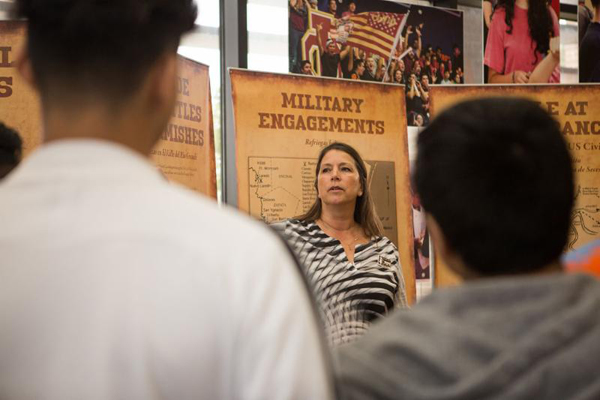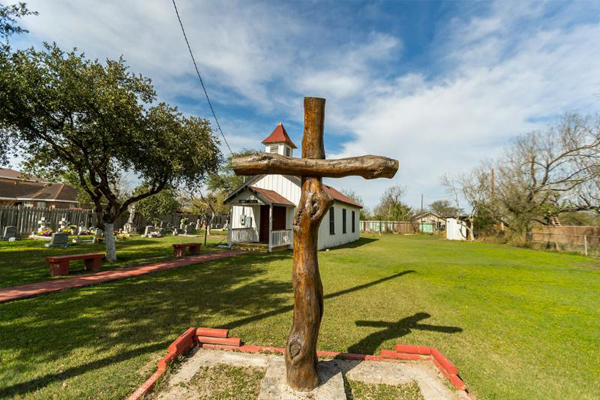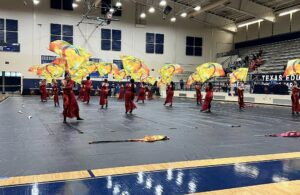Don't Miss
- La Feria Community Holds Succesful Business Mixer Event
- Little Nashville to Take Place in Downtown Mercedes
- Lions Basketball Captures District Gold
- La Feria ISD Students Compete in Regional Chess Tournament
- Lions End First Half of 32-4A on a High Note
- La Feria ISD Held Another Successful Parent Conference
- Strong Appearance for Lions at Hidalgo Power Meet
- LFECHS Students Get to Meet Local Actress
- Students Participate in Marine Biology Camp
- Two LFECHS Students Qualify for All-State Band
UTRGV Researchers Uncovering South Texas’s Part in the Underground Railroad
- Updated: March 8, 2019
by Maria Elena Hernandez
RIO GRANDE VALLEY, TEXAS – Lessons about the Underground Railroad often focus on escaped slaves heading north to free states and Canada.
But many people don’t know they also headed south – to the Rio Grande Valley.
Researchers at The University of Texas Rio Grande Valley are working to uncover South Texas’s part in the Underground Railroad. And this area was, after all, the last stop before Mexico, which abolished slavery decades before the Emancipation Proclamation was issued in the United States.
ROUTE FOR COTTON, AND FREEDOM
Roseann Bacha-Garza, program manager for UTRGV’s Community Historical Archaeology Project with Schools (CHAPS) and a history lecturer at UTRGV, said slaves in Texas actually were quite familiar with the southern path to freedom.
“Those who were already in Texas and serving on plantations in East Texas already had knowledge of pathways of how to get down to the border, as they were shepherding the plantation owners’ cotton to the ports down here,” she said.
Fugitive slaves also heard of people in the Rio Grande Valley willing to help them, families Bacha-Garza learned about during research for the Rio Grande Valley Civil War Trail project.
“One of those families was named the Jackson family,” Bacha-Garza said. “Nathaniel Jackson was the patriarch, and he led a caravan of five covered wagons, seven families, over a dozen emancipated slaves from his plantation in Alabama through Louisiana into Texas.”
The Jackson family settled in what is now San Juan. And few miles west of the Jackson’s home, John Ferdinand Webber set up a home with his wife, Sylvia Hector, and their children.
“What’s really interesting about these two particular families is that they both had white husbands and emancipated black slave wives,” Bacha-Garza said.
Escaped slaves heard these two families could help them reach Mexico.
“They knew of the Webbers. They knew of the Jacksons,” she said.

Roseann Bacha-Garza, program manager for CHAPS and a history lecturer at UTRGV. Photo: Silver Salas/UTRGV
RISKS TO FAMILIES
“Both ranches had ferry landings on their property, which made it easy for them to shepherd escaped slaves over the river, across into Mexico,” Bacha-Garza said.
The quick access to Mexico not only helped fugitive slaves, but also acted as a safeguard for family members. The Fugitive Slave Act authorized the capture of escaped slaves, and some slave catchers would also kidnap freed slaves and put them back into servitude.
“There were plenty of folks out there who were afraid for both reasons that the Fugitive Slave Act would cause them harm,” she said.
People who were caught helping escaped slaves also faced punishment.
RESEARCH SOURCES LIMITED
Researchers don’t know how many slaves the Jacksons and Webbers helped.
“There really aren’t any primary sources left behind, like letters or documents stating that somebody participated in this activity, because it was secret,” Bacha-Garza said.
However, the CHAPS program manager said researchers learned that some fugitive slaves who made it to South Texas did not actually cross the Rio Grande.
“They liked it here so much, they stayed,” she said.
UPCOMING PRESENTATIONS
CHAPS will be sharing their research about the Underground Railroad in the Rio Grande Valley at two events this month.
- The film “Just a Ferry Ride to Freedom,” debuts 6:30 p.m. Wednesday, Feb. 20, at the UTRGV Performing Arts Complex on the Edinburg Campus. Scholars, elected officials and descendants of the ranching families will participate in the event. “The film will bring a unique and complete perspective on what life was like here along the Rio Grande during that time; how it has evolved throughout the years; how it has a direct impact on the way we live our lives here, right now; and the makeup of the community of the people here,” Bacha-Garza said.
- On Feb. 28, the CHAPS program manager will present “The Underground Railroad through South Texas to Mexico,” 12:15 p.m. to 1:15 p.m. on the UTRGV Edinburg Campus, in ELABN 101.
You can learn more about the UTRGV CHAPS program at utrgv.edu/chaps.



